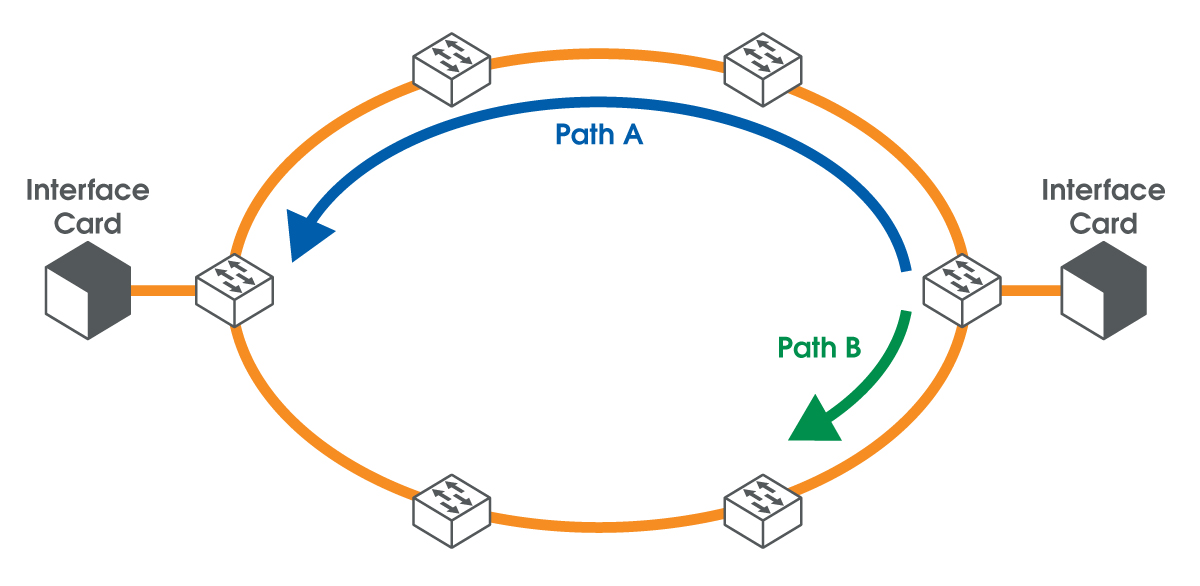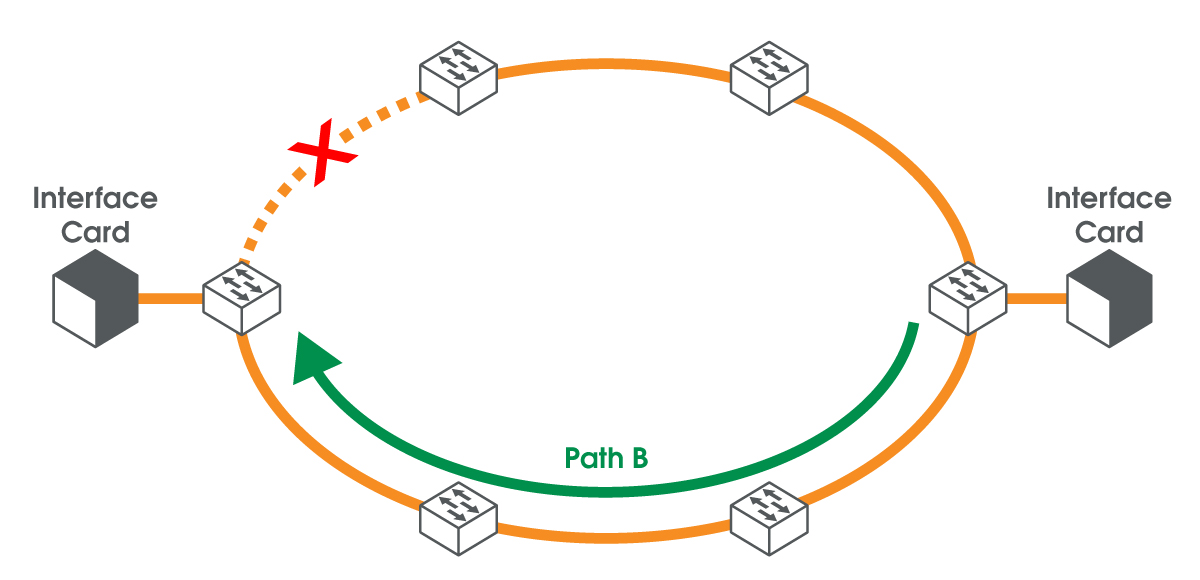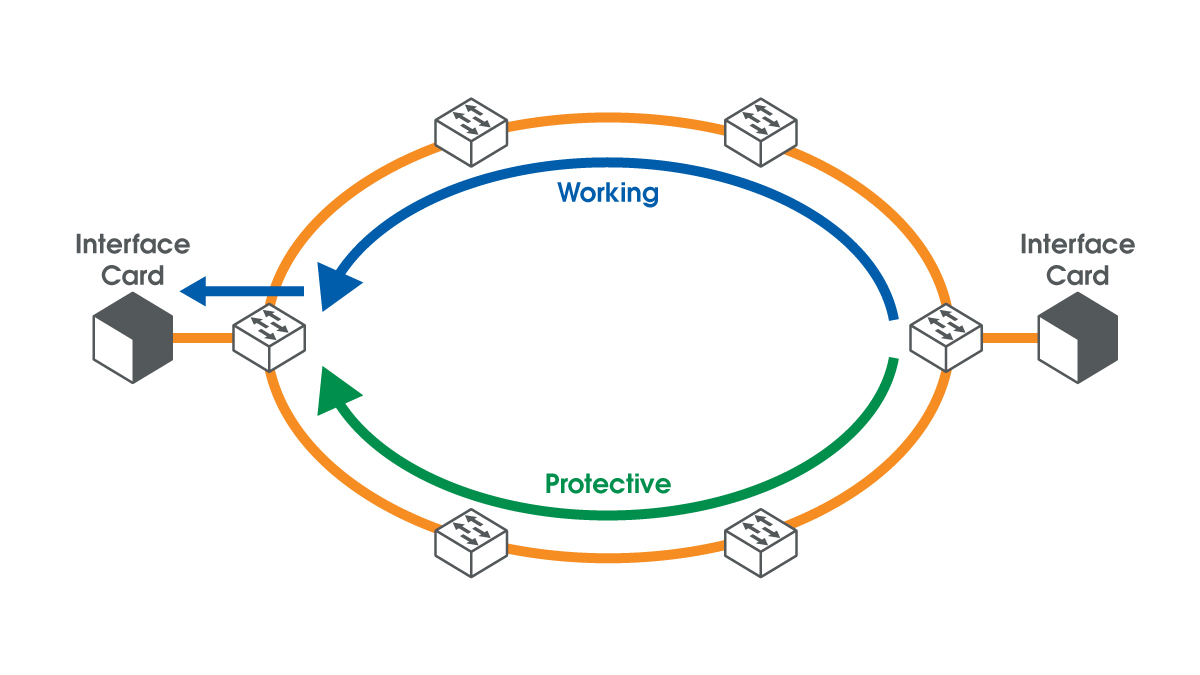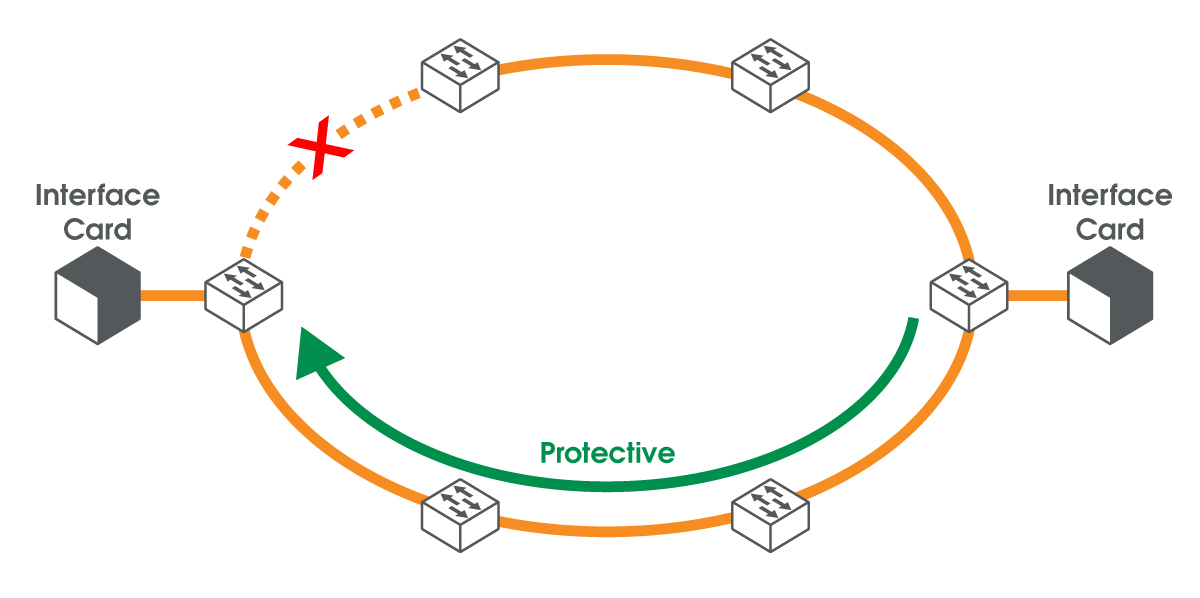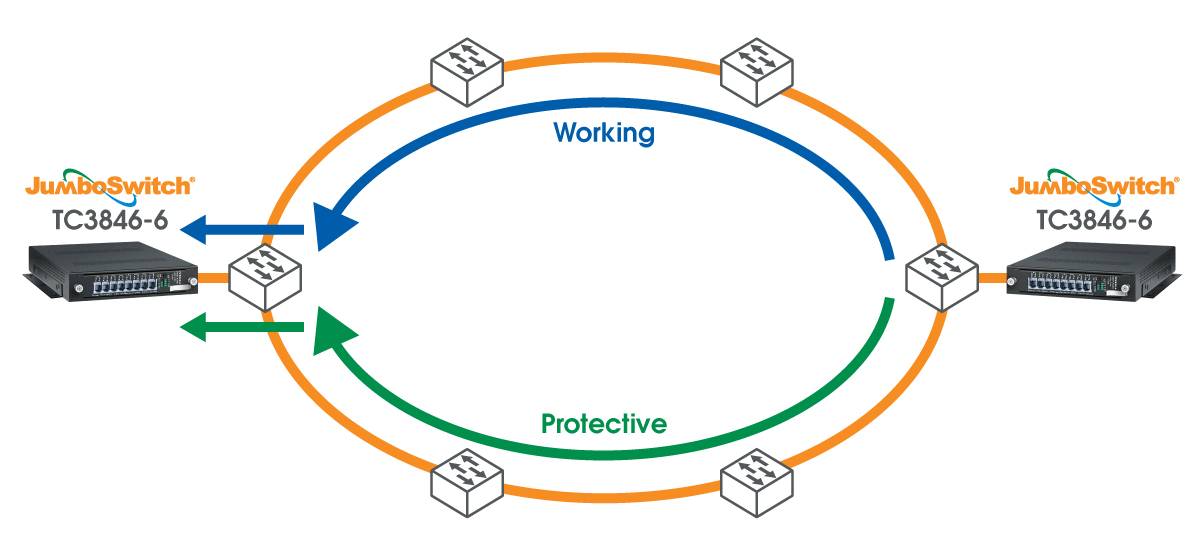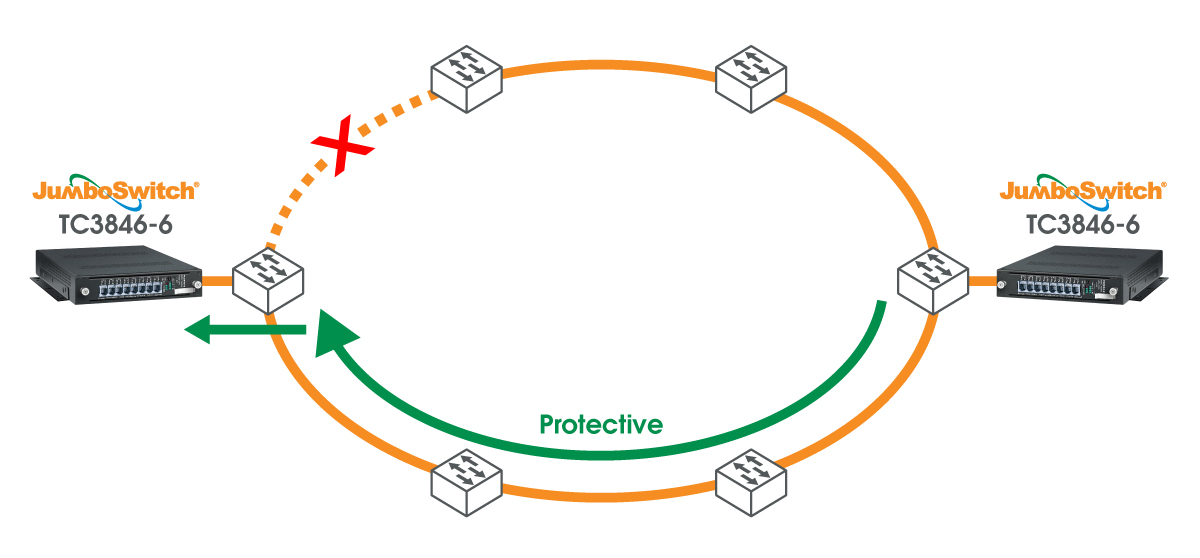For Ethernet/IP networks using a ring topology, built-in redundancy features are an important component of telecom equipment to ensure that operation can continue in the event of a link failure. This application note discusses a new, advanced redundancy feature of JumboSwitch® products called “1+1 hitless” protection and compares it to other redundancy techniques like “1-to-1” protection and “1+1” protection.
Beginning with the TC3846-6 4W E&M 600 Ohm and Dry Contact-over-IP Gateway, TC Communications is rolling out this feature on JumboSwitch interface cards. The purpose of 1+1 hitless is to provide redundancy in a ring-based network with zero downtime if one of the links fails, making it the most convenient and reliable redundancy technique available.
In this application note, we discuss 1+1 hitless protection, using the TC3846-6 as an example, while also covering other common types of network redundancy more generally.
Other Types of Redundancy Techniques
1-to-1 Protection
Unlike 1+1 and 1+1 hitless protection, which utilize both the working and protection paths in an Ethernet ring simultaneously, 1-to-1 protection is a type of redundancy in which the IP network automatically routes traffic through the most efficient path between two interfaces.
Meanwhile, loop prevention protocols (using nodes) block the redundant path.
The diagrams on the next page illustrate how 1-to-1 protection utilizes only one path at a time.
1-to-1 Protection in Standard Topology
1-to-1 Protection Showing Link Failure
In the top diagram, two interfaces communicate with each other in a ring-based network. The node on the lower right blocks the redundant path (Path B), causing traffic to be routed in a counterclockwise fashion through Path A.
The bottom diagram shows that when there is a link failure in the primary path, the node on the bottom right unblocks the redundant path (Path B), routing traffic in a clockwise fashion from the right-side interface to the left-side interface.
While this 1-to-1 method provides reliable network resiliency if any single link fails, there is still a period of downtime, as the network re-routing is generally quick but not instantaneous.
1+1 Protection
1+1 protection is a type of redundancy that utilizes both the working and protection channels in a ring simultaneously, but, similarly to 1-to-1 protection, it uses a node to block the redundant (protective) path until there is a link failure. The node receives packets of data sent from the first interface on both channels; however, it sends only one packet to the second interface.
The diagrams on the next page illustrate how this works:
1+1 Protection With Primary and Redundant Paths
1+1 Protection Showing Link Failure
The top diagram shows that while both the working path and the protection path are routing traffic, the node on the left side sends only the packet of data sent over the working path to the interface on the left. It discards the redundant packet.
However, when a link failure occurs, as seen in the bottom diagram, the node on the left sends the redundant packet of data to the interface card, enabling operation to continue. However, like 1-to-1 protection, there will still be a period of service downtime, as some packets are potentially lost or delayed to the point of being unusable.
1+1 Hitless Protection for Redundancy
Similarly to 1+1 protection, 1+1 hitless protection utilizes the working path and the protection path simultaneously, with one key difference: While 1+1 protection blocks the redundant path until there is a link failure, 1+1 hitless protection utilizes both paths without loop prevention protocols blocking the redundant path. Instead, the receiving node transmits packets of data from both channels to the receiving interface card, meaning that the interface card receives information from the other interface card twice. The JumboSwitch interface card then ensures that it utilizes only one set of data packets.
The biggest advantage of 1+1 hitless over 1-to-1 and 1+1 protection is that it provides for true zero downtime in the event of a failure. While those other redundancy types require some service downtime to resolve a link failure, 1+1 hitless enables operation to continue at 100% by guaranteeing that the receiving interface card has at least one copy (if not both) of any data packet sent from the other interface card, eliminating the need for the network to reroute the path.
The diagrams below show how two TC3846-6 cards can communicate in the event of a link failure by utilizing 1+1 hitless:
1+1 Hitless Protection Using Two TC3846-6 Cards
In this ring using two TC3846-6 interface cards, both paths are utilized simultaneously. The node on the far left sends two packets of data to the interface card on the left; it is up to the interface card to ensure it sends only one copy of the data.
1+1 Hitless Protection Showing Link Failure
When a link failure occurs, the interface card on the left still receives a backup copy of the data sent over the redundant path. This means the network requires zero downtime to reroute the path, allowing operations to continue uninterrupted.
Conclusion
At TC Communications, we strive to provide products that maximize efficiency and help networks perform optimally. With the introduction of 1+1 hitless protection as an advanced redundancy feature of JumboSwitch, mission-critical ring-based networks relying on JumboSwitch products such as the TC3846-6 can continue operating with zero downtime when single link failures occur, making 1+1 hitless the most convenient and reliable of the three major network redundancy options.
Related
Interested in similar content? Subscribe to our mailing list.
